Tracking down leaks quickly and accurately has always been one of the biggest challenges in plumbing. Traditional methods often involve trial and error, cutting into walls or floors just to locate the problem. Not only is this time-consuming, but it also leads to unnecessary property damage. Fortunately, professional plumbers now have access to advanced leak Read more
Industry Blogs
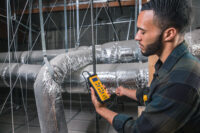
Tracking down leaks quickly and accurately has always been one of the biggest challenges in plumbing. Traditional methods often involve trial and error, cutting into walls or floors just to locate the problem. Not only is this time-consuming, but it also leads to unnecessary property damage. Fortunately, professional plumbers now have access to advanced leak detection tools that make the process faster, more precise and far less invasive.
Today’s modern techniques eliminate guesswork, allowing tradesmen to identify leaks before they cause significant damage. Whether working in homes, businesses or large-scale municipal plumbing systems, staying ahead of these advancements gives professionals the edge they need.
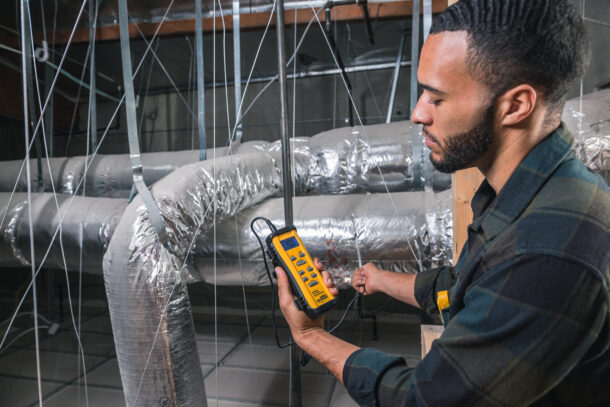
Why Advanced Leak Detection is a Game-Changer
Integrating advanced leak detection tools into daily operations offers plumbers a major advantage. These cutting-edge technologies help tradesmen:
- Diagnose Leaks Faster: Finding leaks quickly leads to faster repairs and higher customer satisfaction.
- Minimize Property Damage: Non-invasive techniques prevent unnecessary destruction of walls, floors and other structures.
- Reduce Costs: Early leak detection prevents severe water damage, reducing repair expenses for homeowners and businesses.
- Build a Stronger Reputation: Offering state-of-the-art solutions positions plumbers as industry leaders and trusted experts.
For plumbing professionals looking to improve efficiency, accuracy and customer trust, investing in these technologies is a smart move.
Innovations in Leak Detection
Thermal Imaging Cameras: Finding Leaks Without Damage
Thermal imaging has changed the way leaks are detected, allowing plumbers to locate hidden moisture without cutting into walls or floors. These cameras detect temperature variations, highlighting areas where water is escaping.
By speeding up diagnosis and reducing property damage, thermal imaging improves efficiency and prevents minor leaks from becoming costly disasters. Whether dealing with radiant heating systems, concealed pipes or underground water lines, this non-invasive technology provides a smarter way to pinpoint leaks.
Acoustic Leak Detectors: Finding Leaks by Sound
For pressurized plumbing systems, acoustic leak detectors provide unmatched precision. These tools use sensitive microphones to amplify the sound of water escaping from pipes, even when hidden behind walls or underground.
Acoustic detection reduces disruption by identifying leaks without unnecessary digging. It’s highly effective for residential plumbing, gas lines and large-scale municipal systems, where early detection prevents excessive water loss and expensive repairs.
Drone Inspections: Reaching New Heights in Leak Detection
Drones equipped with high-resolution cameras and infrared sensors are changing large-scale plumbing inspections. They provide detailed images of rooftops, water mains and underground systems, helping plumbers detect leaks faster.
By eliminating risky manual inspections and improving accuracy, drones enhance maintenance efforts while reducing downtime. Municipal water departments, industrial facilities and commercial properties are already benefiting from this cutting-edge approach.
Hydrostatic Pressure Testing: Detecting Leaks in Water and Sewer Lines
Hydrostatic pressure testing is a powerful tool for detecting leaks in water and sewer lines. By pressurizing a pipe system with water and monitoring pressure levels, plumbers can quickly determine if there is a leak. If the pressure drops, it signals a problem in the system.
This method is highly effective for testing underground pipes, slab leaks and sewer lines without unnecessary excavation. By identifying leaks early, hydrostatic testing helps prevent extensive damage and costly repairs.
Smart Leak Detection Sensors: Real-Time Monitoring for Early Detection
Smart leak detection sensors are revolutionizing the plumbing industry by providing real-time monitoring for homes and businesses. These sensors are installed near potential problem areas – such as under sinks, near water heaters and along pipelines – to detect moisture and alert homeowners or maintenance teams immediately.
With Wi-Fi connectivity and app-based notifications, these sensors provide an added layer of protection by catching leaks before they become major issues. They are particularly useful in commercial buildings, apartment complexes and industrial facilities where early detection can prevent significant water damage and financial loss.
Smarter Leak Detection for Modern Plumbing
Finding leaks no longer has to mean guesswork and unnecessary damage. With smarter, more precise detection methods, plumbers can diagnose issues faster, cut down on costly repairs and provide a seamless experience for customers. These advancements aren’t just about efficiency – they’re about setting a higher standard for service.
By embracing cutting-edge technology, plumbers can stay ahead of the competition, build trust with clients and tackle even the toughest leaks with confidence.
AUTHOR BIO: Leslie Erickson is the Marketing Manager at Air Mechanical. She has been working for Air Mechanical for most of her life and specializes in marketing. She is dedicated to bringing customers the best experience possible for their family and their homes.
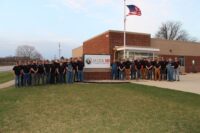
Dozens of skilled trade workers from across Illinois recently gathered at United Association Local 149’s training center in Savoy, Illinois, for the prestigious Illinois Pipe Trades Association Committee on Training and Education (COTE) contest. Top apprentices, who earned their place by winning local competitions, put their expertise to the test through rigorous written exams and Read more
Dozens of skilled trade workers from across Illinois recently gathered at United Association Local 149’s training center in Savoy, Illinois, for the prestigious Illinois Pipe Trades Association Committee on Training and Education (COTE) contest.
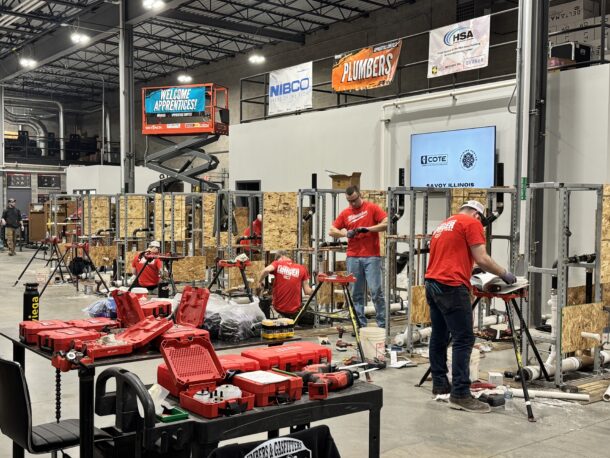
Top apprentices, who earned their place by winning local competitions, put their expertise to the test through rigorous written exams and hands-on challenges. Competing in plumbing, welding, pipefitting, sprinkler fitting, and HVAC, they tackled complex projects and real-world scenarios, demonstrating the highest level of skill and craftsmanship.
“The statewide apprenticeship competition at Local 149’s newly expanded training center was a tremendous success, showcasing the talent of our apprentices and the strength of our commitment to training excellence,” said Matthew J. Kelly, Business Manager & Financial Secretary-Treasurer of Plumbers & Pipefitters Local 149. “Funded entirely by our dedicated members, our state-of-the-art facility ensures every apprentice receives top-tier education and hands-on experience. This competition is the pinnacle of their five-year journey, proving their expertise and preparing them for success as journeypersons. Local 149 is proud to invest in the future of our industry and the success of our apprentices.”
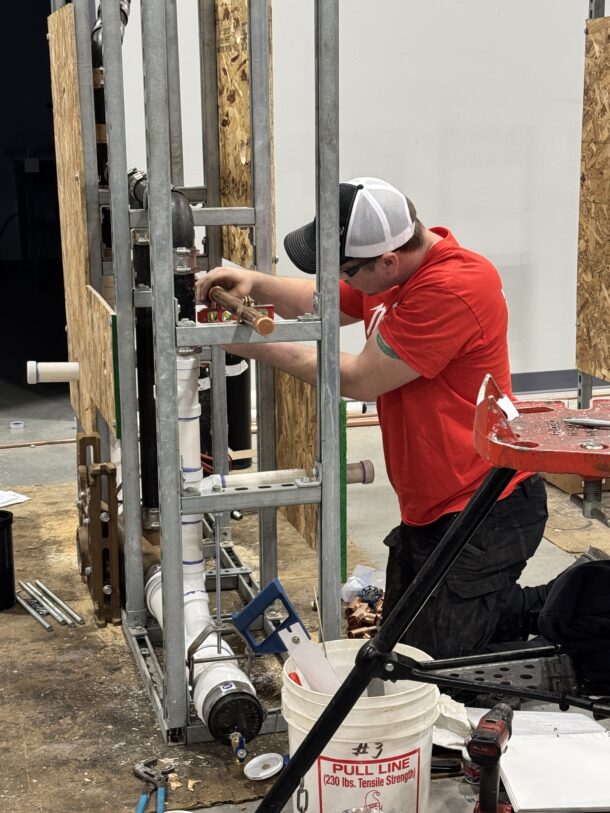
The event also drew strong industry support, with manufacturers like Milwaukee Tool and NIBCO backing the competition. “NIBCO was proud to sponsor the 2025 Illinois State Pipe Trades Apprenticeship Contest, continuing our strong partnership with UA plumber and pipefitter unions,” said Aaron Kilburg, NIBCO Commercial Sales Manager. “We support these skilled professionals with world-class products and training programs that advance craftsmanship, safety, and innovation across our industry. Congratulations to this year’s outstanding competitors and winners.”
The competition culminated in an awards ceremony at the I-Hotel in Champaign, where the top performers in each trade discipline were recognized. State champions will advance to the regional competition in Iowa, with hopes of earning a place in the international finals this summer.
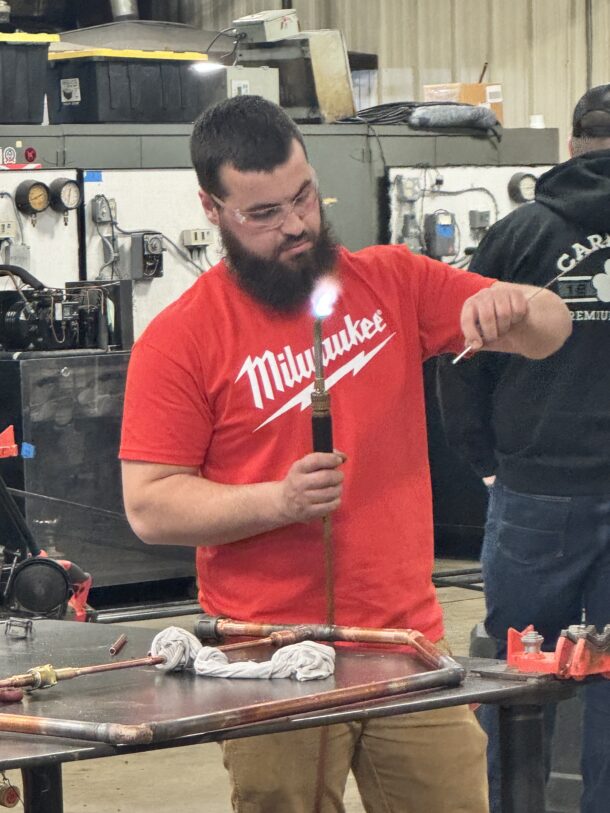
Last year’s Illinois plumbing champion, Andrew Hall of Local 149, proved the strength of Illinois’ training programs by winning the international plumbing title—setting a high standard for this year’s competitors.
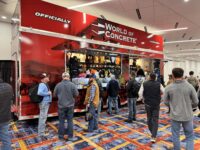
Mechanical Hub Media attended the World of Concrete (WOC) trade show in Las Vegas this week has been an enlightening experience, offering a comprehensive view of the latest advancements and trends in the concrete and masonry industries. Not too mention, it’s the show to see all the power tool manufacuters in one place, with their Read more
Mechanical Hub Media attended the World of Concrete (WOC) trade show in Las Vegas this week has been an enlightening experience, offering a comprehensive view of the latest advancements and trends in the concrete and masonry industries. Not too mention, it’s the show to see all the power tool manufacuters in one place, with their new product launches.
Held at the Las Vegas Convention Center from January 20 to 23, 2025, WOC 2025 marked its 51st anniversary, solidifying its reputation as the premier international event dedicated to these sectors.
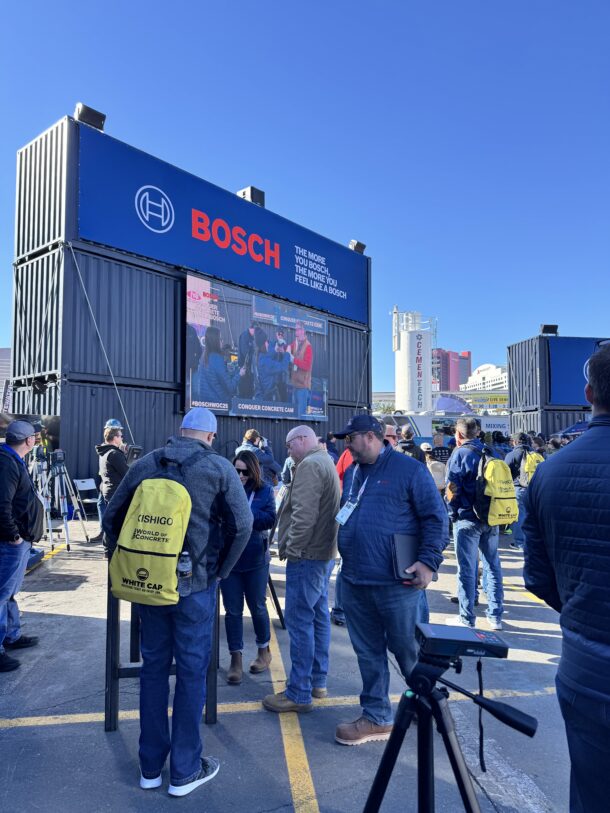
Event Overview
The event is structured into two main components:
- Education Sessions (January 20-23): These sessions provided in-depth knowledge on various topics, including new technologies, safety protocols, and business strategies. Industry experts led seminars and workshops, fostering a collaborative learning environment.
- Exhibits (January 21-23): The exhibition halls were bustling with over 1,500 exhibitors showcasing innovative products and services. From cutting-edge machinery to sustainable materials, the exhibits offered a glimpse into the future of the industry.
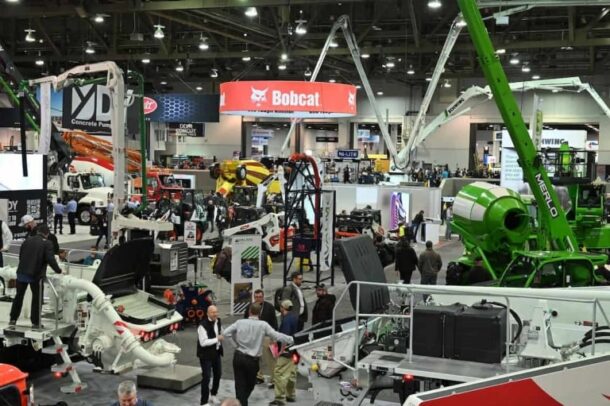
Key Highlights
- Innovative Product Launches: Many companies unveiled new products designed to enhance efficiency and sustainability. For instance, advancements in concrete admixtures promise to improve durability while reducing environmental impact.
- Live Demonstrations: The outdoor exhibit areas featured live demonstrations of equipment and techniques. Witnessing these applications in real-time provided practical insights into their benefits and implementation.
- Networking Opportunities: WOC facilitated connections among professionals from around the globe. Various networking events allowed attendees to exchange ideas, discuss challenges, and explore potential collaborations.
- Educational Seminars: Topics ranged from the integration of digital technologies in construction to the latest safety standards. These sessions were instrumental in broadening understanding and staying updated with industry best practices.

Conclusion
Attending the World of Concrete 2025 was a valuable experience, offering exposure to the latest industry innovations and fostering professional growth. The combination of educational sessions, product exhibitions, and networking opportunities provided a holistic view of the current and future state of the concrete and masonry sectors. For professionals committed to staying at the forefront of the industry, participation in WOC is highly recommended.
For more information on World of Concrete visit www.worldofconcrete.com.
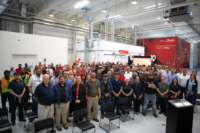
By Steffan Busch, Talent Acquisition Coach & Executive Recruiter You know you need people to grow your business. Everyone knows that. But hiring the right people for your open jobs requires a robust talent acquisition program. And not everyone knows that! If your talent acquisition program consists of posting jobs to Indeed for free and Read more
By Steffan Busch, Talent Acquisition Coach & Executive Recruiter
You know you need people to grow your business. Everyone knows that.
But hiring the right people for your open jobs requires a robust talent acquisition program. And not everyone knows that! If your talent acquisition program consists of posting jobs to Indeed for free and offering an employee referral bonus of a couple hundred dollars, you’re on the wrong end of the bell curve. A proper talent acquisition program is more than posting a free, bland job description on Indeed and praying for applicants. Moving your company to the right end of the bell curve requires an investment of time and money.
If you don’t like the idea of investing financial resources into talent acquisition, I hate to break it to you, but there’s already a financial cost.
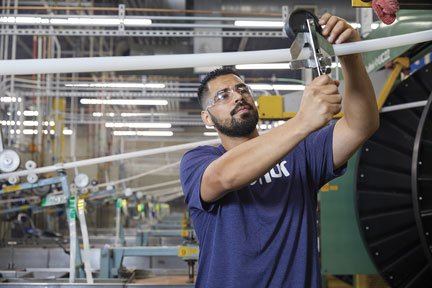
Consider the cost of being understaffed. Let’s look at plumbing and electrical service. Assuming a plumbing/electrical service technician is running three calls/day with an 85% conversion rate and an average ticket of $825, that comes out to $2,104 per day and $504,900 annually in missed potential revenue. And that’s for one service technician! Now let’s look at the cost of a single unfilled comfort advisor position. Three calls per day with a 50% conversion rate and $9,000 average ticket comes out to $13,500 per day. That’s $3,240,000 annually in missed potential revenue!
Now let’s consider the cost of losing people – the cost of turnover. Think about the cost of hiring the person who just left. Consider the cost of posting to job boards. Then add up pre-employment testing, interviewing time, drug test/background checks, and the time and administrative costs for onboarding the person who left. Think about their salary. Add up the base pay times the length of time they were on the job. Add bonuses/commissions, including sign-on bonuses. And don’t forget the cost of their health insurance, 401k, PTO, etc.
Now consider the cost of maintaining that person in the same job. What’s the cost of purchasing and maintaining uniforms, vehicles, tools, iPads, computers? How much did you invest in training them? Add that all up and you’ll come to a number that’s somewhere between six and fifteen times that person’s salary!
When it comes to hiring, your goal is to hire and retain as many high-performers as possible for your open roles. It’s critical to get it right the first time – you don’t want to have to keep going back to the drawing board. An intentional and fully developed talent acquisition program consists of the following components:
- Employer Value Proposition – What sets your company apart from the competition? Why should a high-performing HVAC installer leave their current company to work with you?
- Strategy – How are you going to broadcast your value proposition to the community?
- Process – Do you have a clearly defined, intentional, and effective hiring process? What’s your onboarding like?
- Metrics – Do you understand which metrics you need to track for effective talent acquisition?
- Compliance – Are you following established labor laws?
Honestly, this is a lot to consider. Who in your organization is going to manage all this and ensure it happens? How will they know what the best recruitment practices are? Do you have an in-house recruiter? Is it time to hire one?
I mentioned that being successful at talent acquisition requires an investment of time and money. But what exactly does that mean?

Let’s start with the time investment part. If you don’t have a recruiter, each member of your leadership team should spend a defined amount of time focusing on recruitment-related activities. These could be action items such as refreshing ads on job boards, screening applications, and networking for contacts. Be intentional with it. Perhaps dedicate five hours a week to it and adjust according to your hiring needs. A time investment in talent acquisition also includes properly vetting candidates.
If you already have a recruiter, provide them with opportunities to upskill by having them attend workshops, which allow them to learn and network with other recruiters. Every job requires a level of training; recruiting is no different.
Now let’s talk about the money investment for talent acquisition. This might mean investing in tools (such as applicant tracking systems) to help you effectively recruit. But what else?
Well, a common question I get is “What percentage of our budget should we dedicate to recruiting?” The answer is generally “No more than one percent of your budget, unless you’re planning to use more expensive media channels to get the word out, such as TV, radio or billboards.” Budgeted talent acquisition money should be put towards digital marketing, social media tactics, and sponsoring job ads on job boards. You’ll also want to invest in a robust employee referral program, if you truly want to hire great people quickly and you want them to stay. Tailor your referral program to reward employees for referring excellent and reliable candidates. And finally, if you don’t have a recruiter, it may be time to hire one or use outside recruiting agencies to help you reach your hiring goals.
Getting the right people in the right seat in a timely fashion is no small undertaking. You need people to grow your business, and that means investing in talent acquisition. I encourage you to consider the return on your investment! One percent of your budget is miniscule compared to the cost of being understaffed and the cost of employee turnover. An investment in talent acquisition is an investment well worth making.
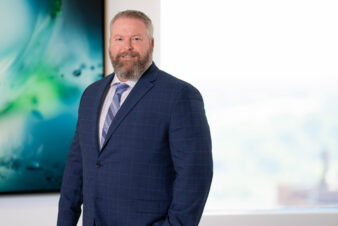 Steffan Busch’s career in human resources and recruiting has spanned more than 14 years. He loves consulting with leaders on how to best position their companies so they can become employers of choice, which helps their recruitment of the best and brightest job candidates in the industry. In his role as Talent Acquisition Coach and Executive Recruiter at Nexstar Network, Steffan has been instrumental in launching NexHire, a tailored solution to help contractors improve their recruitment marketing, streamline their process, and identify professionals who are the right fit for their culture and their business for the long term.
Steffan Busch’s career in human resources and recruiting has spanned more than 14 years. He loves consulting with leaders on how to best position their companies so they can become employers of choice, which helps their recruitment of the best and brightest job candidates in the industry. In his role as Talent Acquisition Coach and Executive Recruiter at Nexstar Network, Steffan has been instrumental in launching NexHire, a tailored solution to help contractors improve their recruitment marketing, streamline their process, and identify professionals who are the right fit for their culture and their business for the long term.
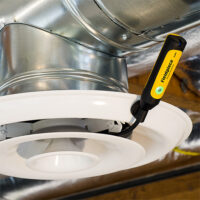
By Tony Gonzalez, Director of Training at Fieldpiece Instruments Airflow is a critical component in the performance and efficiency of HVAC systems. Proper airflow ensures optimal heat transfer at the evaporator coil and distribution of properly conditioned air throughout the home. The right airflow maintains comfort and air quality, reduces energy consumption, and prevents equipment Read more
By Tony Gonzalez, Director of Training at Fieldpiece Instruments
Airflow is a critical component in the performance and efficiency of HVAC systems. Proper airflow ensures optimal heat transfer at the evaporator coil and distribution of properly conditioned air throughout the home. The right airflow maintains comfort and air quality, reduces energy consumption, and prevents equipment from overworking or failing prematurely. Diagnosing and resolving airflow issues are a must to ensure optimal system performance.
Tips for Troubleshooting Airflow in a Home’s HVAC System
To troubleshoot airflow issues in an HVAC system, HVAC techs can start with a basic checklist. Assess filters, as dirty or clogged filters can significantly restrict airflow. Inspect the ductwork for any obstructions, leaks, or disconnections that could impede airflow. Vents and registers should be examined to ensure they are open and unobstructed by furniture, curtains, or other objects. The blower motor should be verified for cleanliness and appropriate speed. Evaluate dampers for any closed or improper adjustments that could restrict airflow. Next, we’ll walk through some airflow tests that can help pinpoint system airflow issues.
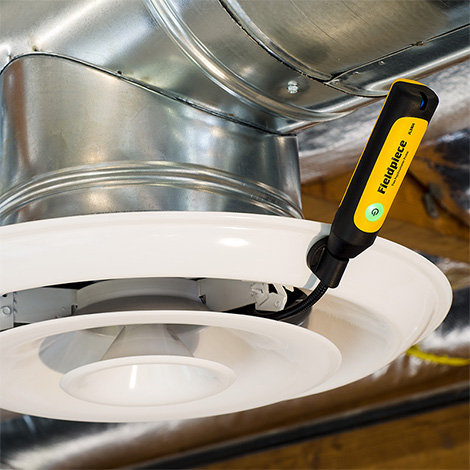
Conducting a Delta T Test
The Delta T test measures the temperature difference between the return air and the supply air, providing insight into the system’s performance. Comparing the Delta T value to the manufacturer’s specifications can indicate issues such as low refrigerant charge, airflow restrictions, too much airflow, or dirty coils.
To conduct a Delta T test, technicians need a dual temperature digital thermometer and thermocouples. Highly effective tools for this purpose are the Fieldpiece JL3RH Job Link® System Flex Psychrometer Probes. The JL3RH sends air measurements directly to the Fieldpiece Job Link® System App, allowing for convenient and accurate data collection up to 1000 feet away. The Fieldpiece JL3RH is particularly advantageous for its ability to measure various parameters, including %RH, dry bulb, wet bulb, dew point, and enthalpy, providing a comprehensive view of the system’s performance.
First, install the thermocouples or probes in the return air and supply air ducts as near to the air handler as possible. Turn on the HVAC system and let it run for at least 15 minutes to achieve stabilization. Record both temperatures, calculate the difference between them, and compare to the manufacturer’s specifications.
Conducting a Total External Static Pressure (TESP) Test
TESP measures the total resistance to airflow in the system, which helps identify restrictions or improper installations. To conduct a TESP test, technicians need a dual port manometer, such as the Fieldpiece JL3KM2, static pressure tips, and flexible tubing. Zero the manometer while in ambient pressure with any tubing or probes attached. Specific placements will vary depending on your equipment, but in general target manometer placement will be before the blower and after the coil or heat exchanger. Calculate the TESP by adding the return and supply readings. Comparing the measured TESP to the equipment’s design specifications can indicate high static pressure due to restrictions, such as dirty filters, undersized ductwork, or low static pressure due to duct leaks or low fan speeds.

Conducting a Live CFM Test
Live CFM (cubic feet per minute) testing measures the actual airflow through the system. When assessing airflow efficiency, conducting air balancing or calculating capacity, a vital first step is measuring equipment CFM. To conduct a live CFM test, technicians need an airflow capture hood, or an anemometer such as the Fieldpiece STA2 In-Duct Hot Wire Anemometer. Allow the system to run for at least 15 minutes to stabilize, and ensure all doors and windows are closed to avoid interference from outside air. Measure airflow at the nearest air return to the equipment. If there is more than one return, measure at the return plenum. Comparing the total CFM to the system’s specifications can indicate issues such as duct leaks, blower motor problems, or improper system balancing. While target CFM will vary based on factors such as region or humidity, ensuring it is within the manufacturer’s specifications ensures optimal system performance and comfort for homeowners.
Conclusion
Proper airflow is essential for the efficiency, performance, and longevity of HVAC systems. Technicians must be proficient in troubleshooting airflow issues to maintain system integrity, as some fixes for inefficient airflow can be easily addressed. For more in-depth diagnostic and repair, conducting tests like Delta T, TESP, and live CFM provides comprehensive insights into the system’s performance, ensuring optimal operation and comfort for homeowners.
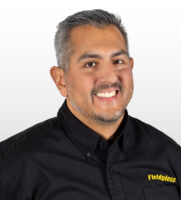 ABOUT THE AUTHOR: Tony Gonzalez has over 20 years of HVAC experience with Fieldpiece Instruments and has been leading Fieldpiece training since 2020. Tony presents courses nationally at conferences, partners with leading industry organizations, and is recognized everywhere for his how-to videos. Tony is committed to sharing the best practices that make HVAC technicians’ jobs easier, faster, and better.
ABOUT THE AUTHOR: Tony Gonzalez has over 20 years of HVAC experience with Fieldpiece Instruments and has been leading Fieldpiece training since 2020. Tony presents courses nationally at conferences, partners with leading industry organizations, and is recognized everywhere for his how-to videos. Tony is committed to sharing the best practices that make HVAC technicians’ jobs easier, faster, and better.
